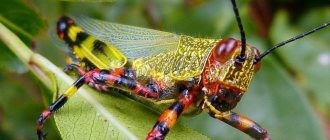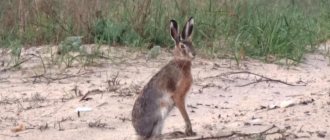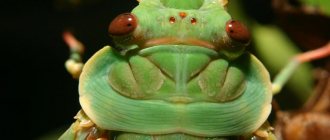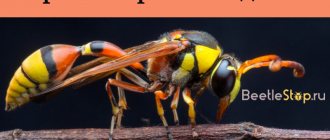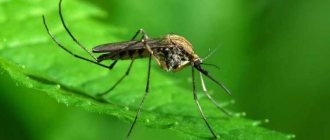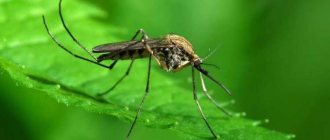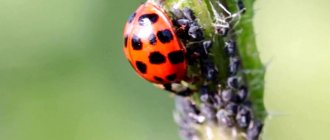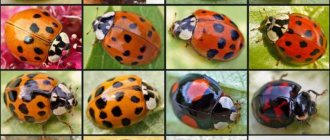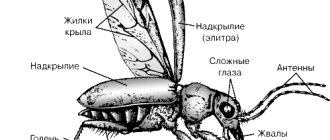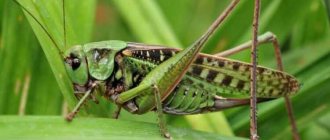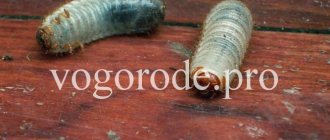Beetles make up the largest group of living creatures on our planet. They live on land and in water; their body sizes and shapes vary. The second name for insects is Coleoptera. Their front pair of wings are transformed into solid elytra, and the back pair is used for flight. One of the families of beetles that live in water is called water lovers. Its largest representative is the large or black water lover. The insect, up to 5 cm in size, is the largest beetle in the European part of Russia.
Description of the large water lover
These beetles swim very poorly and reluctantly; they mainly prefer to crawl on aquatic plants. When swimming, water lovers make asynchronous movements with their middle and hind limbs. The tarsi have swimming bristles on the upper side. Essentially, they resemble swimming oars. The breathing of water-loving beetles is airborne, that is, they breathe atmospheric air. Periodically, they rise head up to the water surface and breathe with thick club-shaped antennae, extending them out of the water. The air is retained in the lower part of the body, between the hairs, and therefore they shine like silver underneath.
Males have suckers on their paws. This is what a big water lover looks like. Body shape, nutrition and appearance are all related characteristics. They largely determine the beetle’s lifestyle, how it hunts and moves. The sides of the abdomen are covered with red spots. Its lower part is without a longitudinal keel. The head is massive with large eyes. The elytra have thin grooves and rows of dots between them. The beetle's antennae are red with an asymmetrical club.
The large water lover is distinguished from others by its black body. Coloring and nutrition have little to do with each other. But perhaps because the water lover mainly eats plants, its black color has taken on an olive-greenish tint. Also, the color of the beetle may be different. Meet:
- Dark brown beetles.
- Dark blue.
Appearance
The great black water lover (Hydroohilus piceus) belongs to the order Coleoptera, the family of water lovers. One of the largest insects in the aquatic environment reaches sizes of 28-50 mm in length and 15-20 mm in width. The body is oval, convex. The color is black with a greenish-brown tint. There are orange spots on the sides of the abdomen. The hard elytra are covered with grooves. The head is large, completely covered with a solid capsule. The eyes are large, the antennae consist of 9 segments. The red antennae end in an asymmetrical club.
The hind middle tarsi have long swimming setae. On the forelimbs, the outermost segment has changed to a triangular plate. The hind legs have sharp spines that can cut the skin. On the abdomen, under the cover of the elytra, there are 6 pairs of spiracles.
Information. Beetles need air to breathe. They float above the water and stick out their heads with antennae, but with them the air descends to the abdomen.
Habitats
The large water lover mainly lives in the following places:
- In Europe, with the exception of the far north.
- In the Mediterranean.
- In the Caucasus.
- In Central and Central Asia.
- In Southern Siberia.
- In Primorye.
- In China.
- In India.
Stagnant, heavily overgrown shallow reservoirs with clean water - this is the place that a large water lover prefers. The food there is often varied. Reservoirs should also warm up well and have a muddy bottom. Beetle nutrition:
- Seaweed.
- Rotten plants.
- Dead small fish.
- Dead insects.
What to do
Greater Merganser mergus merganser
Representatives of the order Coleoptera rarely bite, and even less often it causes inflammation or damage to the skin. As a rule, the consequences manifest themselves in the form of local skin irritation, and inflammation or allergies occur extremely rarely, so the instructions for assistance are quite simple, and first aid can be provided independently.
In case of unwanted contact with a beetle, the following actions should be taken:
- wash the affected area with water, preferably with soap;
- disinfect with any antiseptic at hand (hydrogen peroxide, bite, lemon juice, alcohol, iodine or brilliant green);
- Applying cold will help relieve pain;
- It is better to stick a bactericidal patch on the wound.
If the pain is severe, you can take any analgesic, and if an allergic reaction develops, you can take an antihistamine. If the point of contact begins to tear or fester, then you need to seek qualified help. In rare cases, surgery may be required, which can only be performed by a doctor.
Reproduction
After spring mating, the female water lover lays eggs in a special cobweb cocoon made of white silky threads. It attaches to plants that grow near the surface of the water. The cocoon has a bag-like flattened shape. At one end it tapers and forms a horn-like process. It takes about 5 hours for the water lover to make a large cocoon. During this period, the beetle's feeding stops for a while. Since the female will directly lay eggs. She is capable of laying about 50-60 eggs. Cocoons are located on the surface of the water. Some females carry them on their abdomens until the larvae hatch.
After about 14 days, the larvae appear and remain in the cocoon until the first moult. They feed on their own skins and threads. They are cone-shaped, thick, 6-9 mm long. The larva has a whitish tint and is curved upward. It has lateral processes and a massive dark-colored head. The duration of larval development is 6-8 weeks. The larvae of a beetle such as the great water lover prefer a mixed diet. They eat plant foods, eat various invertebrate animals and can even attack tadpoles and gastropods. Typically, larvae hunt their prey from ambush. They rise to the surface of the water and catch prey, stick their heads out, pour digestive juices over it, grind it and absorb it in a semi-digested state. Small larvae are harmless, but large ones cause considerable harm to fisheries, as they eat large numbers of fish fry. Then the larvae of the water lover come to the surface of the earth and pupate in the soil. At the end of summer, the strengthened beetle, which emerged from the pupa, crawls out of the ground and goes to the pond. This takes about 2 weeks. The developmental stage from egg to adult takes about 9-14 weeks.
Interesting Facts
The largest crab in the world
There is an opinion that the diving beetle chooses weak and sick inhabitants of the pond as victims for attack, that is, it is, in fact, an orderly. The diving beetle usually does not show hostility towards a person who finds himself in the same water pool. But the bite is very painful even for a person.
The sharp pain associated with the bite may go away after some time, but swelling occurs in the bitten area, completely disappearing after 14-20 days. The wounded area must be washed, treated with disinfectants, bandaged and a cold compress applied.
Most often, beetles show aggressiveness towards those who try to catch them and pick them up. At home, experts do not recommend keeping swimming beetles and ornamental fish in the same aquarium, as the predator will attack them and can seriously injure them.
Swimming beetles are a large (more than 4 thousand species) family of aquatic beetles that live in almost all regions of the world except the driest ones. Some are even able to live under ice. Many of them are freshwater predators. The scientific name of the insect is Dytiscidae. The term comes from the ancient Greek word dytikos, meaning "one who loves to dive."
Lifestyle of water lovers
Beetles are diurnal and nocturnal. They are poor swimmers, but crawl well along the bottom and underwater plants. In addition, the large water lover, whose feeding occurs mainly in water, begins to fly at night. He prefers warm moonlit nights.
These beetles have a lot of enemies. They are protected in two ways:
- Releasing a stinking mush from the body.
- An unpleasant grinding of underwings on the abdomen.
With these methods listed above, water lovers try to scare away their enemies.
FIND FIVE DIFFERENCES
The water lover is often confused with the swimming beetle, although they are very easy to distinguish by their structure, body shape, and habits. The aquatic is more convex on top, with the elytra strongly narrowed backwards. This beetle has very long oral palps, and short antennae, because they are adapted for storing air and no longer perform sensory functions; the palps take on this role.
Water swimmers swim slowly, rowing alternately with their middle and hind legs, while swimmers are faster and more maneuverable, and have both pairs of hind legs rowing at the same time. The water lover floats up to take in air with his head up, and the diving belly sticks his abdomen out of the water. The legs of the male diving beetle are equipped with disc-shaped suckers, while those of the water lover are equipped with triangular extensions.
Are large water lovers dangerous for humans?
This type of beetle does not pose any danger to humans. Since it was in the reservoir that the water lover found a great habitat. Its diet does not include various agricultural crops that belonged to humans. This means that the water lover will not cause harm to agriculture and land. Also, these beetles do not eat wood. Accordingly, they do not threaten the forest industry.
Water lovers are not carriers of various infectious diseases, and their populations are not so large as to even potentially be able to harm humans.
Beetles with double names
The water beetle (lat. Hydrophilus piceus, Great silver water beetle) or the great black water beetle is a representative of the family of beetles of the suborder heterovorous. The largest of the European water beetles, reaching a length of 5 cm. The water beetle is brown, shiny or dirty black-olive in color.
The chest and four hind legs are covered with red silky hair. The body is oval, flat, like a diving beetle. The hind legs are thin, long, armed with extremely sharp spines, which, with one touch, wound the skin almost to the point of bleeding.
The thorn located on the chest is even sharper, so you must handle this insect with extreme caution.
The legs of water-loving beetles are equipped with swimming hairs, but these aquatic inhabitants swim poorly, and therefore prefer to stay close to the shore, in thickets of aquatic plants. The slow water lover has many enemies
It defends itself from some by throwing out a black, foul-smelling mush, while it tries to scare others by creaking its belly against the inside of the elytra. The water lover flies well, mainly on moonlit nights.
Water lovers have short, club-shaped antennae that point backward and are held close to the head. Their jaw appendages, the maxillary palps, are directed forward. The antennae of water lovers, like those of diving beetles, consist of 11 segments, and the palps - of no more than 4.
As a result, water lovers, although protected by their hard coverings, often become prey to swimming beetles, which, overtaking them while swimming, pierce their only vulnerable place with their jaws - the neck, and kill them to death.
The water lover cannot live without atmospheric air, but collects it not with the tip of the abdomen, like a swimmer, but with its antennae. These antennae are geniculate, with segments in the shape of flattened cups, lying tightly to the body and equipped with a groove on the inside in which air accumulates while the antennae are exposed.
After holding them out of the water for a few moments, he brings them closer to the body and, as it were, wipes them on it. The air on them glides over the body and sticks to the silky soft fluff covering it, so that the whole body in a few minutes is covered with countless small air bubbles, which gives it a beautiful appearance.
Having thus stocked up on air, the water lover descends into the depths and sits or swims there until his entire supply is depleted, and then either rises to the surface of the water and lies there motionless on the leaves of plants, or again begins to accumulate air. Female water lovers, before laying eggs, weave a silky cocoon-nest for them.
Then she interweaves these threads with each other and makes out of them something like a bag, the shape of which is the tip of her abdomen.
Having completed the bag halfway, she changes the position of her body - she hangs her head down and, without removing her abdomen from the bag, begins to cover it with layers of threads from the inside to make its walls as thick as possible, and finally covers it with a thick layer of sticky liquid secreted by her, which makes this bag waterproof.
Having finished the nest, which now looks like a small plum with the top cut off, the female lays 40 to 50 white oblong eggs in it. She arranges them in rows, in the shape of a continuous semicircle, and fills everything with liquid, which turns into a cotton wool-like mass after drying.
If it is destroyed, the cocoon will drown and the larvae will not develop. All this work lasts no more than 3 or 4 hours. Sometimes the female covers the entire cocoon with various plant debris.
Having thus attached the cocoon to the leaf, the female drags it along with her until she finds a quiet, comfortable place, and then launches it into the water. The hard, curved horn with which the cocoon ends gives it the ability to cling to floating bodies that come its way.
After 12-15 days, the larvae emerge from the eggs, but do not leave the cocoon, but grow, feeding on its contents. This explains their unusually large size in relation to the egg from which they emerge.
Water-loving larvae are thick and clumsy, with relatively short legs. The grown larva generally feeds on mollusks with thin spiral shells floating on the surface of the water.
The larvae swim poorly and in order to rise to the surface of the water, they have to crawl along the branches of aquatic plants.
Photo of water beetle
Video water beetle
Features of the insect
The large water-loving beetle is an inhabitant of water. Among its relatives, it is one of the largest - the body length of the water lover reaches up to 5 cm. The eye is attracted by the black glossy color of the water lover. If you compare it with the fringed beetle, then in appearance they have some similarities. A striking distinctive feature of the latter is the noticeable yellow edging surrounding the long body of the insect.
On the massive head of the beetle there are large eyes and short club-shaped antennae. On the sides of the abdomen you can see red spots. On the dorsal side of the body there are elytra with thin grooves. Under them are hidden 6 pairs of abdominal spiracles.
Pennywort
The body shape of the large water lover is oblong and convex. If compared with the body of the fringed diving beetle, it is less streamlined. Therefore, an overweight insect swims slowly and very reluctantly. This also happens because the beetle makes asynchronous movements with its middle and hind legs.
In addition, the limbs of the water lover have triangular extensions, while the diving beetle has disc-shaped suckers on them. As a result, its paws do not so deftly perform the function of oars. That is why the beetle prefers to crawl more in thickets of plants growing in water. Photos of water lovers are presented below.
Squeak beetle
The squeak beetle (lat. Lilioceris lilii, English Red Lily Beetle) aka the Lily beetle and aka the rattle beetle - a beautiful varnish-red beetle 6-8 mm long, feeding on leaves, buds, stems and flowers of lilies, hazel grouse and others plants from the lily family. Sensing danger, the beetle makes a high-pitched sound emanating from the abdominal region. Hence its name - squeak. And when you bring a box of collected insects to your ear, you can enjoy a kind of concert.
It is clearly visible due to the bright red coloring of its back. However, birds do not pose a threat to beetles, since they have a disgusting taste. The beetle is active in the warm season, when there is food. The beetle exhibits a rare ability for self-preservation: it flies well and hides well - when a person approaches, it falls to the ground, turns over and hides its “beacon wings” under its black abdomen. Thus, against the background of the ground, the beetle becomes invisible.
In order not to scare off the pest, to detect it directly at the scene of the “crime” and to collect all identified individuals, it is necessary to walk around the area against the sun so that your shadow does not fall on the pest. The beetles usually fly in May, when warm, sunny weather sets in, but it should be noted that this period can be very extended (from April to June).
The female can lay 300-450 eggs at a time. The female's ability to lay eggs lasts for two seasons. A week later, larvae with an orange-brown body and black legs and head emerge from the eggs attached to the underside of the leaf. Their body is covered with mucus from their own excrement. This allows you to repel predators. The larvae of the lily beetle are pinkish in color, similar to the larvae of the Colorado potato beetle, but without spots on the sides.
The larvae develop in 16-24 days. They are almost invisible from above; they, like the clutch of eggs, are located on the underside of the leaves. When the development of the larvae ends, they burrow into the ground, where they pupate. The pupae acquire a silky orange shell. After about three weeks, adult individuals emerge from the pupae and continue feeding until late autumn. Beetles overwinter in the soil, under the remains of garden plants or fallen leaves. The wintering site may be far from the lily plantings. These tend to be shady, sheltered, damp and cool areas.
This species was originally distributed only in Eurasia, but in the 40s it was introduced to Canada, possibly along with lily bulbs. Now common in many climate zones; where lilies are cultivated. It became especially widespread when lilies began to be grown on an industrial scale in many areas of North America.
The most common means of controlling squeak beetles is to collect adult specimens. On industrial plantations, as a rule, neem tree extract is used, which kills larvae and repels adults. There are also seven species of insect parasitoids that use the body of the lily beetle for their development, these are the wasps Tetrastichus setifer, Diaparsis jucunda, Lemophagus pulcher and Lemophagus errabundus, which lay eggs in the larva of the squeak beetle.
Photo of the squeak beetle Video of the squeak beetle
/wp-content/uploads/2016/12/treschalka.mp4
+1
SLOW VEGETARIAN
The black water lover prefers not to swim in the water column, but to crawl along the bottom or aquatic vegetation near the shore. The adult beetle feeds on filamentous algae and soft parts of aquatic plants, but on occasion it can eat a dead fish or insect.
In case of danger, the water lover makes creaking sounds, rubbing its belly against the inside of the elytra, and buzzes loudly in flight. It flies well, especially on moonlit nights, and can fly to electric light during the resettlement period.
CRADLE SHIP
In early spring, the female water lover begins to weave a web cocoon - a bag of threads produced by glands at the end of the abdomen. Having found some floating leaf, she attaches the first webs to it and begins to weave a bag, first one half, then the other. Inside, she finishes it with a waterproof, loose mass that hardens in air, like cement. Having laid there in rows of 40-50 white oblong eggs, she weaves a cap, ending at the top with a curved process - both a float and a ventilation hole, sticking out vertically, like a mast. As a result, the silver-white cocoon, attached to a leaf near the surface (it can be up to 25 mm in diameter), does not sink or turn over in the water, and the eggs remain dry and supplied with fresh air. It takes at least 2-3 hours to build a cocoon.
After 16-18 days, the larvae appear and remain in the cocoon until the first molt, feeding on their own skins and the shell of the cocoon. The larvae are clumsy and thick, with relatively short legs, swim poorly, crawl mostly on plants, sometimes rising to breathe - there are spiracles at the end of the abdomen. Unlike their parents, they are predatory, although they prefer sedentary prey, such as snails. To protect themselves from enemies, the larvae spray a stinking black liquid and hide in the spreading cloud of this “smoke screen”.
After two months, the larvae come ashore and make cradles for themselves, where they turn into pupae. At the end of summer, adult beetles emerge from them, which after some time are sent back to the water.
Xylophage and typographer
A special feature of the xylophage is that its digestive tract contains fungi and bacteria that help break down wood. This parasite feeds on decaying fallen trees.
As for the typograph beetle, it destroys the forests of Kamchatka, the Far East, Europe, Sakhalin, and Siberia. He prefers trees with fairly thick bark, and the plant must be alive. An insect will never settle on a dead tree. Such bugs in the house are very dangerous. The types of wood do not matter much to them if they have chosen a wooden country house. From such a house, in just a year, only one piece of dust can remain. And because of its small size, the beetle is difficult to see, which is why it is so dangerous.
As we can see, all the representatives of bark beetles we examined are very dangerous beetles (species and names are indicated earlier), causing harm not only to homes, but also to large forest areas.
Lifestyle
The water lover is predominantly nocturnal, preferring to fly out on a warm moonlit night. The beetle has many enemies, from which it defends itself by making an unpleasant grinding sound with its elytra. The water lover can scare off the enemy in another way, by releasing a paste of unpleasant odor from the body.
The fringed swimmer and the great water-lover also differ in habits. When surfacing, the water lover sticks his head out and draws in air with his antennae. As a result, oxygen envelops the abdomen from below, forming a kind of bubble. The swimmer takes in air by raising its belly.
The main habitat of the large water lover is a reservoir, pond or river; the fringed swimming beetle can live in both running and standing water. The food of the large water lover is algae, rotten parts of aquatic plants, the remains of dead insects and river fish. If you keep such beetles at home in an aquarium, you can feed them with aquarium fish food, bloodworms, tubifex, and even lettuce or dandelion leaves.
The swimmer is a predator that attacks all small aquatic inhabitants: snails, tadpoles, insects, crustaceans, and fry. The swimming beetle and its larva are the most dangerous enemies of fish, as they eat not only fry, but also fish eggs.
Natural enemies
Water lovers are very slow insects. Due to their slow movement speed, they become prey for many animals. The main enemy is the swimming beetle, which feels comfortable in the water. He overtakes the water lover and hits him in the neck.
The water lover is also food for reptiles, amphibians, and many types of fish, especially if the beetle is large and fat.
The water lover is eaten by birds, insect predators, and animals. However, the beetle can defend itself if it is in danger. It throws out a black pulp that has a disgusting smell, which scares away enemies. In addition, the beetle begins to creak, its belly touching its elytra, wanting to scare the enemy. Post Views: 175
